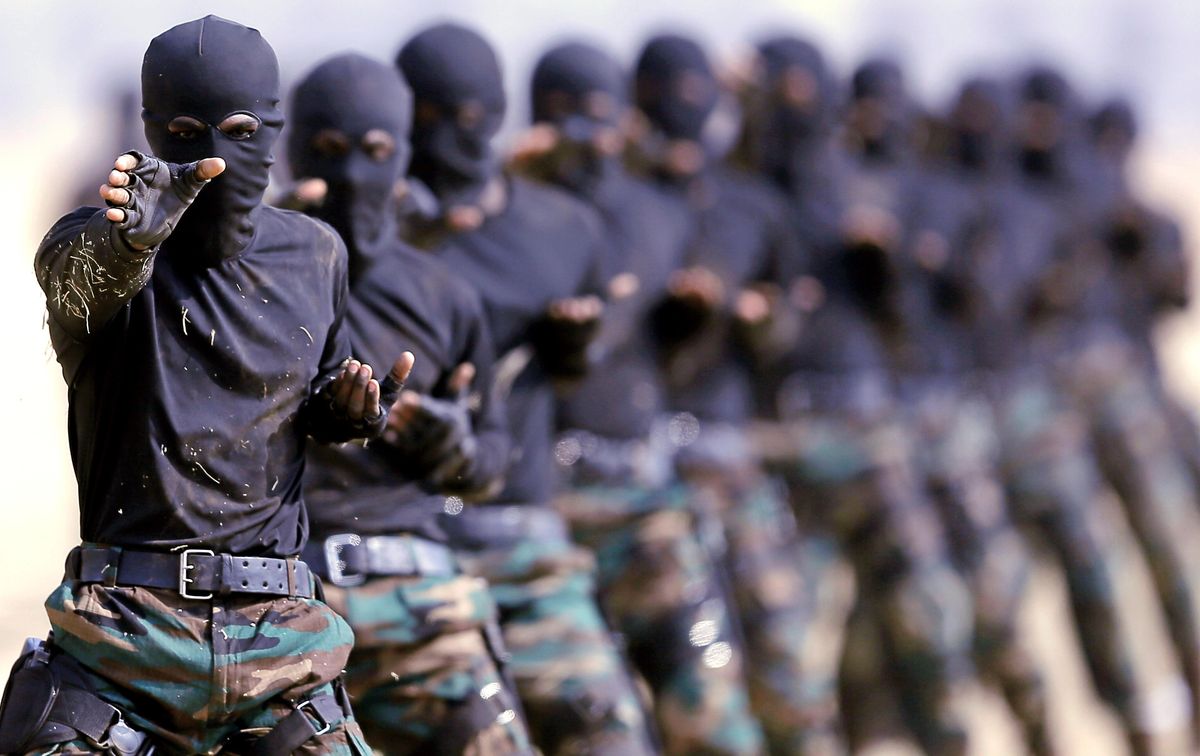Sri Lanka’s military downsize
In its latest bid to cut the economic fat, Sri Lanka's government announced that it will downsize its army, aiming to reduce the number of military personnel from 200,783 to 135,000 by next year and to 100,000 by 2030. Sri Lankan defense officials say the army is restructuring in order to boost its tech capabilities, primarily in cyberspace. But analysts highlight that this is part of President Ranil Wickremesinghe’s pledge to slash the bloated public sector, a precondition to unlocking a $2.9 billion bailout package from the International Monetary Fund. Crucially, military salaries make up around 37% of public wage costs. Cash-strapped Sri Lanka defaulted on its external debt for the first time in May 2022, after years of economic mismanagement led to acute fuel and food shortages – and forced Colombo to borrow heavily from India and China. With the bulk of Sri Lanka’s defense spending going to salaries rather than investment in equipment, this plan presents an opportunity for the country to correct its balance sheet. But some critics worry that Colombo, facing an internal terror threat, could be moving too hard too fast.
America’s gun violence disease
It’s been a deadly start to the year in America, with 38 mass shootings recorded nationwide in just three weeks. In recent days, two mass shootings in California in just 48-hours – including in Monterey Park, where 11 Asian Americans were gunned down while celebrating Lunar New Year, and in Half Moon Bay, where 7 were killed on Monday – have again put the spotlight on America’s unique gun problem. Communities in Florida, Louisiana, and Maryland are also reeling from mass shootings in recent weeks, reflecting the long established gun culture in America that distinguishes the US from other advanced economies. (For context, there are around 120 guns circulating in the US for every 100 people.) So, what happens now? President Joe Biden on Monday called on Congress to pass legislation banning assault weapons and raising the purchasing age to 21, but the newly empowered House Republican caucus will never go for it. Meanwhile, to defend their pro-gun position, Republicans are pointing out that many states with high gun-violence rates already have tight gun laws, but that ignores the fact that many of these weapons are illegally smuggled from states with laxer regulation.
Mr. McCarthy (soon) goes to Taiwan
Having vowed last year to retrace the steps of his predecessor, newly installed House Speaker Kevin McCarthy announced on Monday that he too will visit Taiwan. You’ll recall that Nancy Pelosi’s trip last August ruffled feathers and changed the status quo, prompting China to conduct live-fire military exercises near the self-governing island. McCarthy’s trip, likely this spring, is almost certain to raise tensions across the Taiwan Strait. China, which considers Taiwan a breakaway province, is concerned that visits by top-level American officials to the region are a de-facto recognition of its government as separate from China’s. The US maintains its “One China” policy, which notably does not allow for official diplomatic relations with Taiwan and recognizes the island as a part of China. Also, the 1979 Taiwan Relations Act only commits the US to helping Taiwan defend itself, although President Joe Biden has said Washington would come to Taiwan’s defense if China attacked. Support for Taiwan is seen as an important geostrategic interest and a bellwether of US credibility in upholding international commitments to its allies. But President Xi Jinping is unlikely keen to see an escalation as he grapples with a national public health crisis after abandoning China’s zero-COVID policy.







